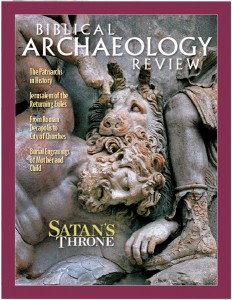
The corpus of Northwest Semitic inscriptions (Phoenician, Hebrew, Aramaic, Ammonite, Moabite, Palmyrene, Nabataean, etc.) is not nearly as large as the corpus of Mesopotamian cuneiform texts (Sumerian, Assyrian and Babylonian) or Egyptian texts (hieroglyphic, hieratic, and demotic scripts). However, the corpus of (linear) Northwest Semitic inscriptions is by no means minuscule. Ostraca (notes on potsherds), seals, bullae (clay seal impressions), monumental stone inscriptions and inscribed prestige objects of various sorts (arrowheads, bowls and ivory) are all well-attested. Moreover, the field of Northwest Semitic epigraphy and paleography (dating by means of development of the form and ductus [the direction, number and order of the strokes that form a letter] of the letters) has made enormous progress in recent years. Among the nephilim (see Genesis 6:4) in this field is Frank Moore Cross. Fellow paleographer Kyle McCarter has referred to Cross’s status in the field as sans pareil.1 Most experts would concur. Leaves from an Epigrapher’s Notebook, a collection of many of Cross’s articles (sometimes updated slightly), is especially welcome.
Already a library member? Log in here.
Institution user? Log in with your IP address.

